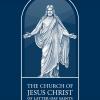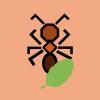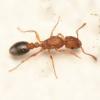- Formiculture.com
- Forums
- Gallery
- Members
- Member Map
- Chat

What do Atta Texana eat?
Started By
FranklinKnight
, Dec 15 2023 1:10 PM
8 replies to this topic
#1
 Offline
-
Posted December 15 2023 - 1:10 PM
Offline
-
Posted December 15 2023 - 1:10 PM
I have a colony of Atta texana and there not really eating anything.
Can I feed them anything from the supermarket.
What about any organic fruits or vegetables?
Should they be in hibernation now?
The fungus is the size of a quarter and not getting bigger.
Tim around 75....
Can I feed them anything from the supermarket.
What about any organic fruits or vegetables?
Should they be in hibernation now?
The fungus is the size of a quarter and not getting bigger.
Tim around 75....
#2
 Offline
-
Posted February 7 2024 - 11:38 AM
Offline
-
Posted February 7 2024 - 11:38 AM
Some of the supermarket produce could have fungicides or pesticides which affect growth of the colony. If you could find lettuce or cabbage outside of a store, it could work. Wild clovers could work too, some people had success with them.
- antsinvirgina likes this
Ants are small creatures... but together... they can rule the world.
#3
 Offline
-
Posted February 7 2024 - 11:48 AM
Offline
-
Posted February 7 2024 - 11:48 AM
Some of the supermarket produce could have fungicides or pesticides which affect growth of the colony. If you could find lettuce or cabbage outside of a store, it could work. Wild clovers could work too, some people had success with them.
To add, Roses or Oats.
Edited by antsinvirgina, February 7 2024 - 11:51 AM.
#4
 Offline
-
Posted February 7 2024 - 12:09 PM
Offline
-
Posted February 7 2024 - 12:09 PM
Some of the supermarket produce could have fungicides or pesticides which affect growth of the colony. If you could find lettuce or cabbage outside of a store, it could work. Wild clovers could work too, some people had success with them.
To add, Roses or Oats.
I'd say the roses, the fungus would have a easier time getting it's roots into it, and would probably get more nutrition from it.
Ants are small creatures... but together... they can rule the world.
#5
 Offline
-
Posted February 7 2024 - 12:21 PM
Offline
-
Posted February 7 2024 - 12:21 PM
They can even eat SOME proteins (like feeder insects) because I believe that Atta Texana workers (or any worker or queen in the genus Atta) don’t really consume the fungus as their food source, and typically feed it to their young. But this is just an add on to what was mentioned above (which are all still, very good statements).
Edited by Artisan_Ants, February 7 2024 - 12:26 PM.
Keeping:
3x - S. molesta (colonies and single queen) 1x - C. nearcticus (founding but no eggs) ![]() New!
New!
1x - C. chromaiodes (colony) 1x - C. subbarbatus (founding)
1x - F. subsericea (founding) 1x - T. sessile (mega colony)
3x - P. imparis (colonies)
2x - L. neoniger (founding)
Check out my C. nearcticus journal here: https://www.formicul...cticus-journal/
Check out my C. chromaiodes journal here: https://www.formicul...aiodes-journal/
#6
 Offline
-
Posted February 7 2024 - 12:28 PM
Offline
-
Posted February 7 2024 - 12:28 PM
To jumpstart your Atta colony, I would recommend the following:
Environment (Temperature, Humidity & Substrate):
- These ants require a constant temperature of 24-25°C and then also at least 80% Humidity. Small colonies are especially susceptible to dry-outs and the whole thing will crash. It would help if you can show us some photos of your current setup. My rule of thumb with these ants is this : when they're small, go very simple. A simplistic container with a plaster bottom will suffice perfectly for your ants. If your colony isn't eating anything, it may be an environmental factor & not with the food itself.
- I also strongly recommend lots of black earth soil during the foundation phase. The soil will come with its own biome that the starter colony desparately need to get started. You'll also want to get some sheep manure too, as this is fantastic to mix in with black earth (ratio is 25% manure & 75% black earth). Mix this well and believe it or not, you'll have your very own mini-bioculture of organisms to keep your colony healthy. Colonies in this substrate mix have a near 100% success rate based on my findings.
Food for the Ants: Sugar-water (25% Sugar, 75% Water):
This will relieve the ants from eating the fungus. Although the ants do eat the fungus, they predominantly can suffice on their own without the need for fungus. This means that they'll give it the chance to grow and refortify.
Replacement fungus is hard to find. Avoid honeywater as when it ferments, it can quickly kill your entire colony.
Food for the Fungus: Fruits & Foliage
These are like a superfood for the fungus:
- Rose petals
- Raspberry leaves
- Rolled Oats
- Raisins
- Dried Mango
- Avocado Leaves
** You CAN use grocery-store product, but make sure it's fresh. Also, when you bring it home, make sure it's well rinsed.
Excellent foods from the Grocery Store:
- Kale
- Baby spinach
- Salad mixes
- Brussels sprouts (recommended when the colony is older)
Logistics / Arrival:
Have you checked that this colony did not get shipped in +28°C weather? Due to their size, overheated queens of this genus can go sterile if shipped in such heat for prolonged periods of time.
Post some photos, would love to see how I can help!
Good luck,
Edited by FormiCanada, February 7 2024 - 12:32 PM.
#7
 Offline
-
Posted February 7 2024 - 1:39 PM
Offline
-
Posted February 7 2024 - 1:39 PM
Those are fungus ants. They eat their fungus, and in a sense you are more needing to provide a good home to their fungus than to them directly.
They will eat sugar-waters if provided, but they do eat the fungus as their food staple. As well as live in it, and keep brood in it. It's like the home inside the home that they also eat.
If you want to provide natural fruit sugar juices to your ants, be sure and use only organic fruits that have not had any pesticides used on them.
Apple/peach/nectarine slices, cut open blue berries or whatever.
But otherwise you need to supply good forage to feed the fungus. I notice rose and other flower petals are popular among the fungus ant keepers.
But i can't say a lot about these ants in particular, as they are a more advanced ant to keep than i am ready for. I did some homework and passed on these ants as my first.
Due to the nature of keeping the environment right for the fungus, which is what makes them an advanced ant to try and keep. The ants are hardier and able to stand up to greater fluctuations in temperature and humidity, then their fungus can.
And if their fungus dies so will they.
My distill is, the fungus is your primary keeping effort here. If you can sustain the good environment and needs for the fungus, then the ants will probably be fine.
#8
 Offline
-
Posted February 7 2024 - 1:59 PM
Offline
-
Posted February 7 2024 - 1:59 PM
Assuming you live in Texas, I would try the local foliage.
Currently keeping: Pheidole obscurithorax (FINALLY I CAN STUDY THEM AND HAVE THEIR COOL MAJORS ![]() ), Tetramorium bicarinatum, Solenopsis spp. (probably xyloni, the queens are tiny hehe)
), Tetramorium bicarinatum, Solenopsis spp. (probably xyloni, the queens are tiny hehe)
Wanting: Atta texana, Camponotus planatus (PLEASE PLEASE PLEASE CAN SOMEONE HOOK ME UP WITH ATTA)
Previously kept: Monomorium minimum, Pheidole dentata
"ATTAAAAAAAAAAAA!!!!!!!!!!!" -Me
"AAAAAAAATTTTTTTTTAAAAAAAAAAAAAAAAAAAAAAAAAA!!!!!!!!!!!!!!!!!!!!!!!!!!!!!!!!!!!!!!!!!!!!!!!!" -Even more me
"AAAAAAAAAAAAAAAAAAAAAAAAAATTTTTTTTTTTTTTTTTTTTTTTTTTTTTTTTTAAAAAAAAAAAAAAAAAAAAAAAAAAAAAAAAAAAAAAAAAAAAAAAAA!!!!!!!!!!!!!!!!!!!!!!!!!!!!!!!!!!!!!!!!!!!!!!!!!!!!!!!!!"- Me personified
#9
 Offline
-
Posted February 8 2024 - 5:08 PM
Offline
-
Posted February 8 2024 - 5:08 PM
No, he doesn't live in Texas. no comment.
Anyway try to feed them any type of leaves in your area. Honestly, not every colony will like the same thing and its usually the plant material with the most nutrients of whatever the fungus needs at this point. Just a theory. Good luck.
Is it just me that likes the look of ant brood? It just reminds of you how well an ant colony is doing.
1 user(s) are reading this topic
0 members, 1 guests, 0 anonymous users





















